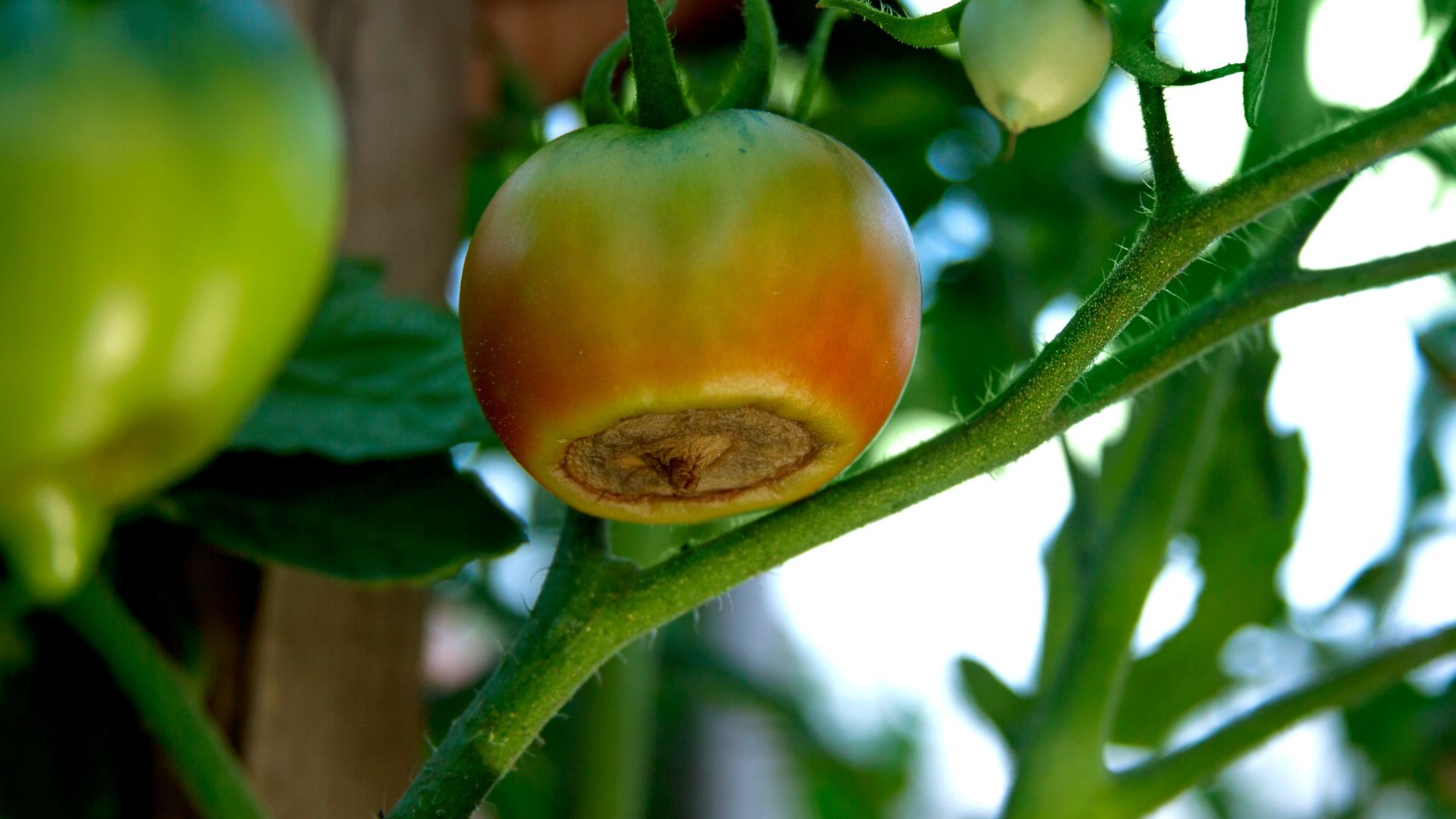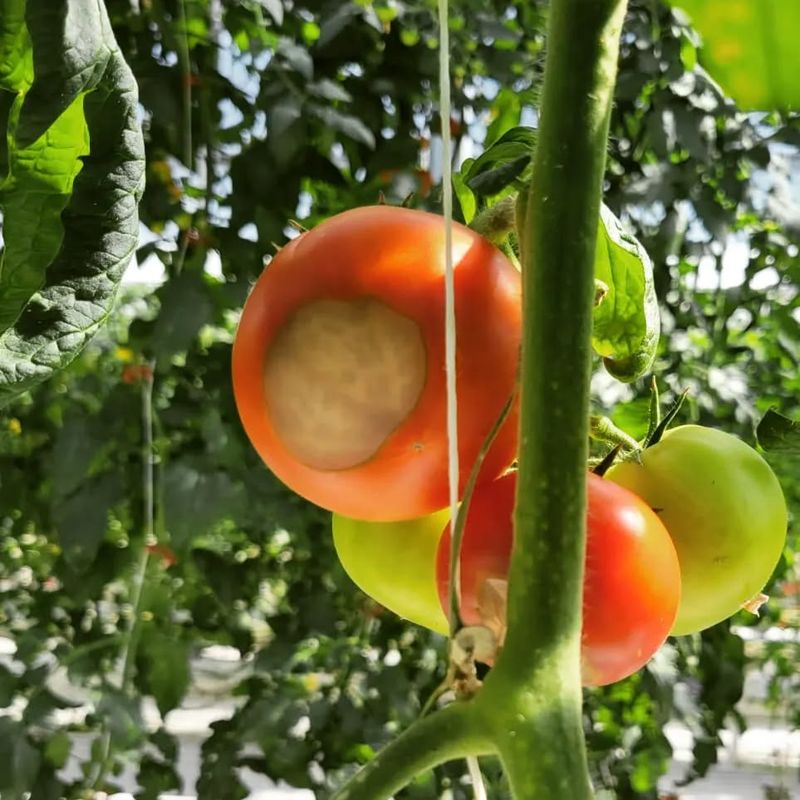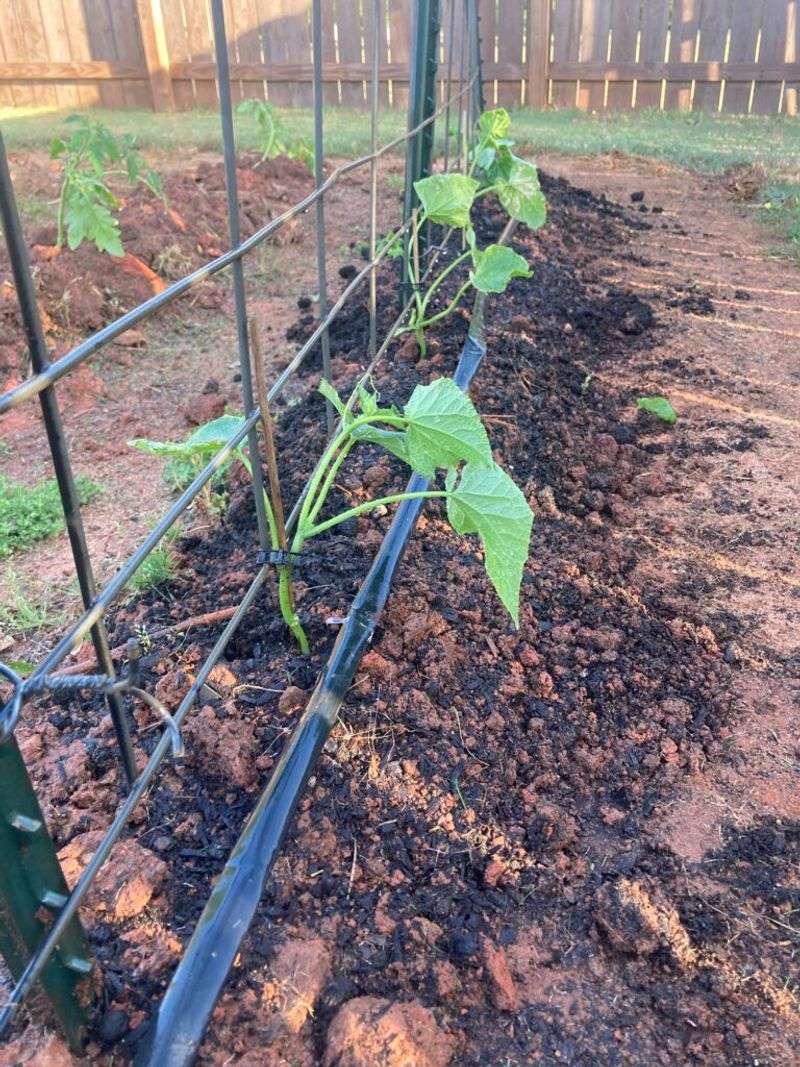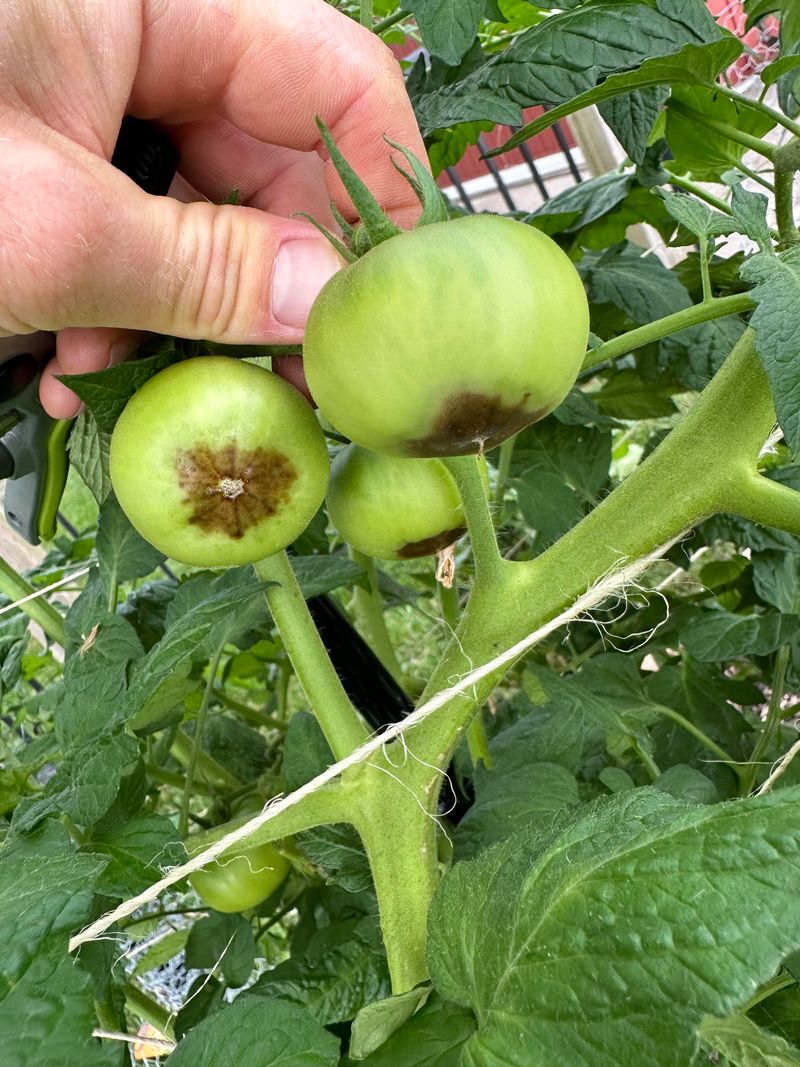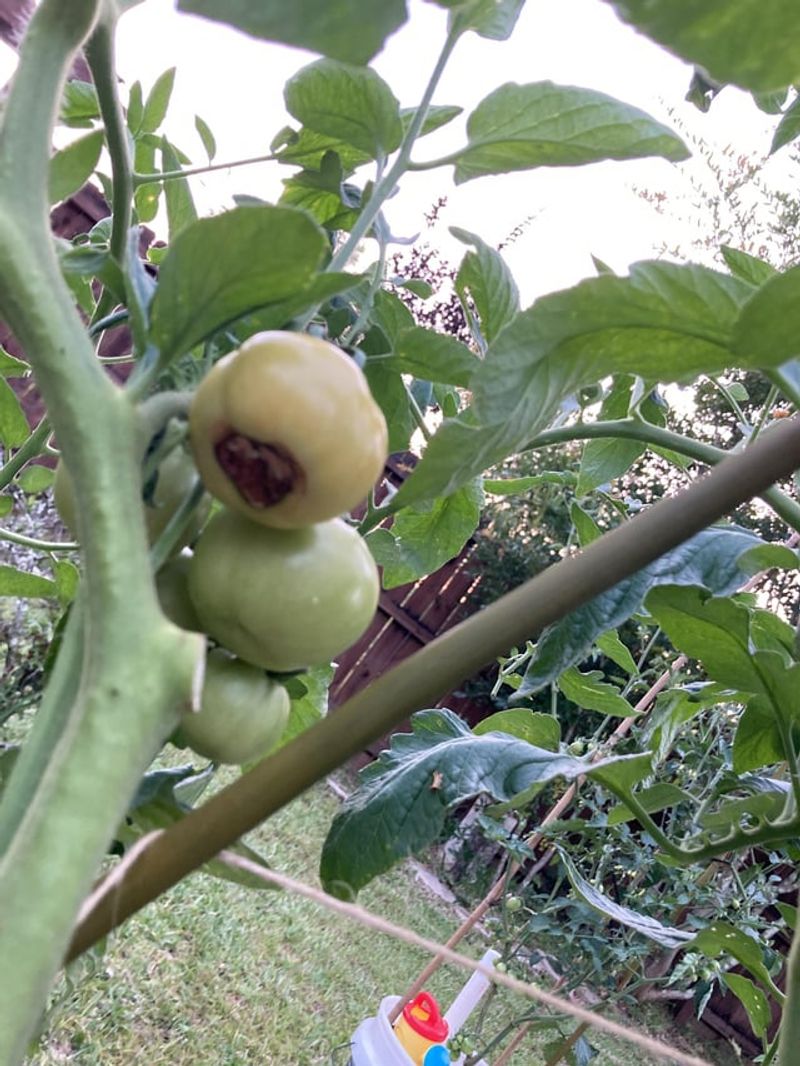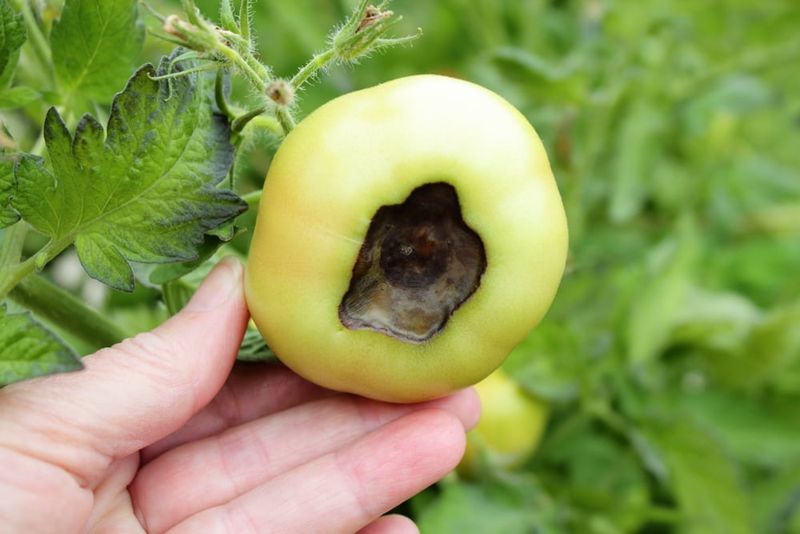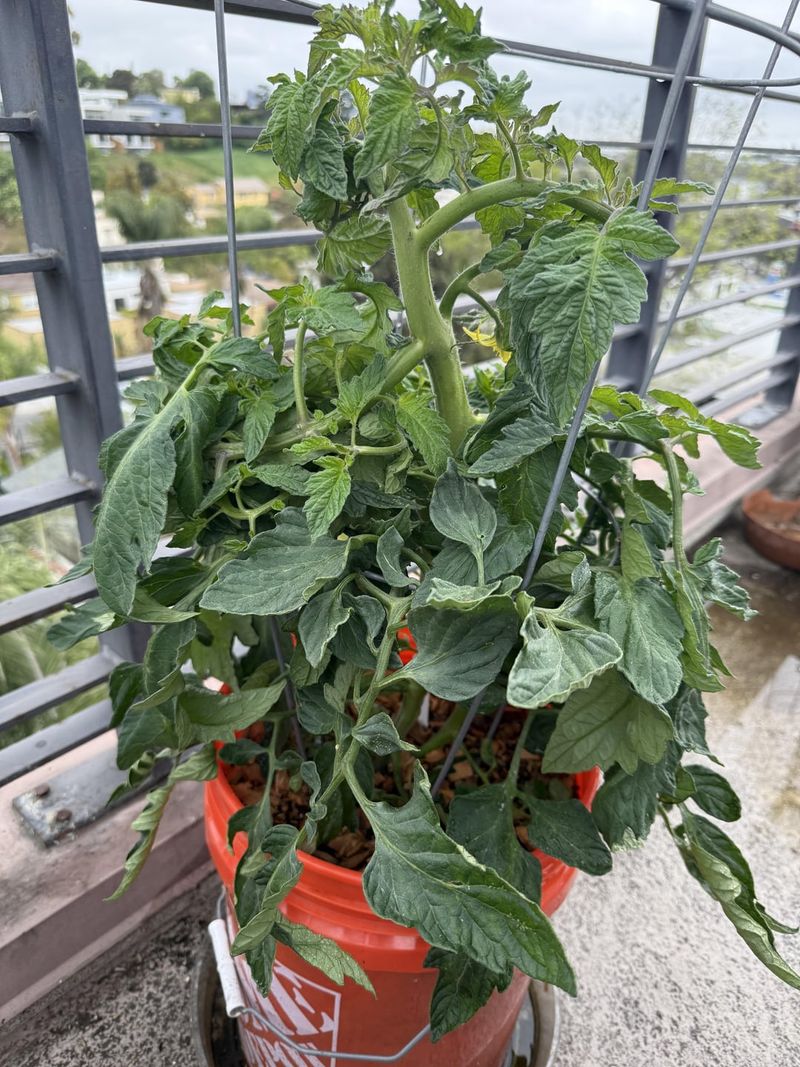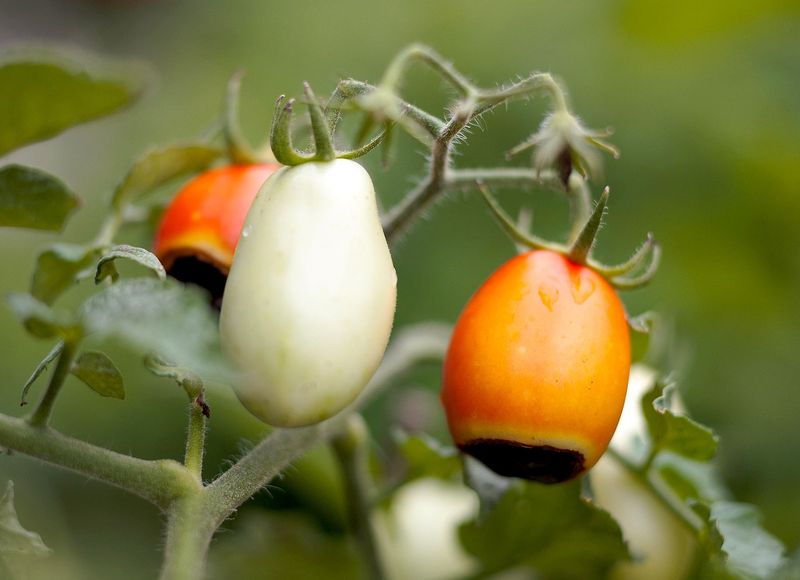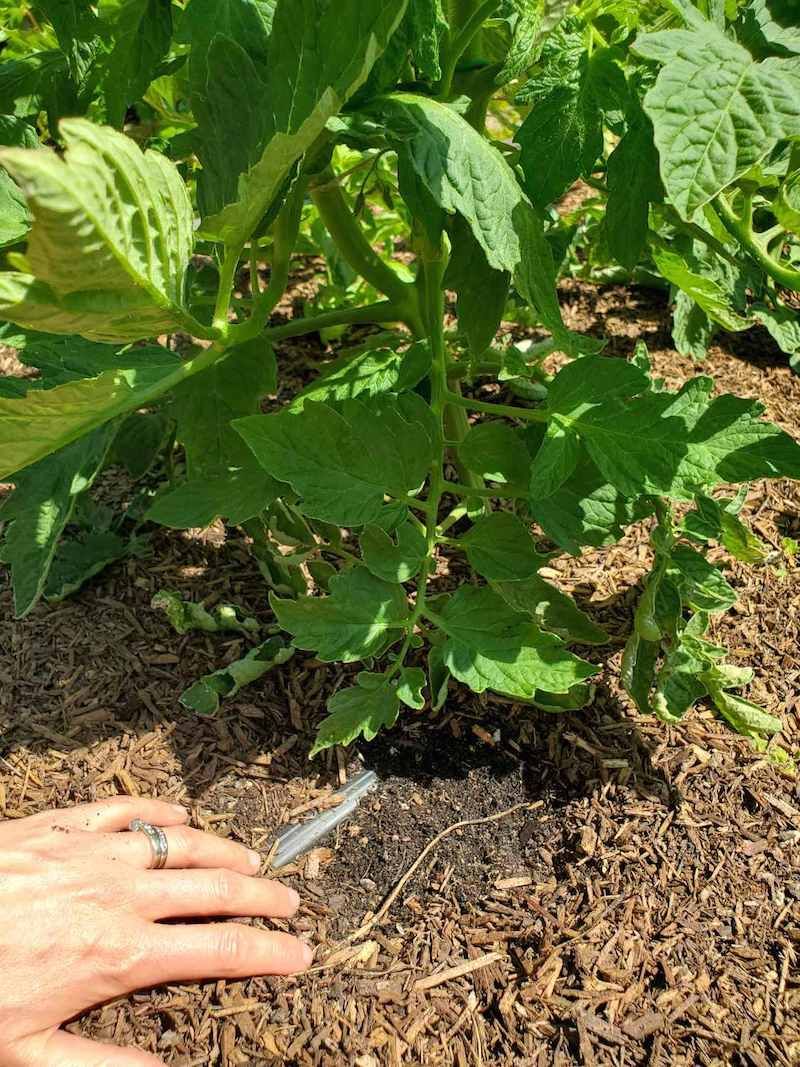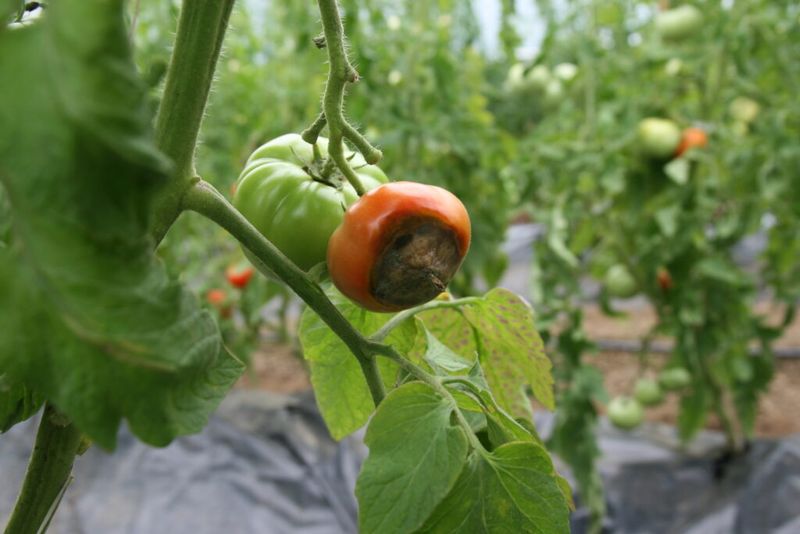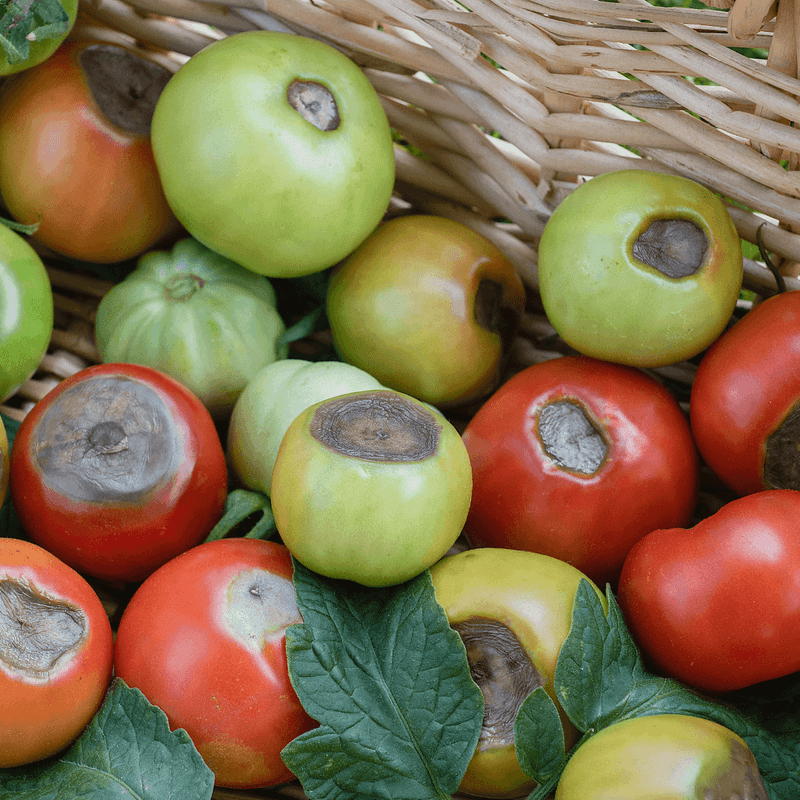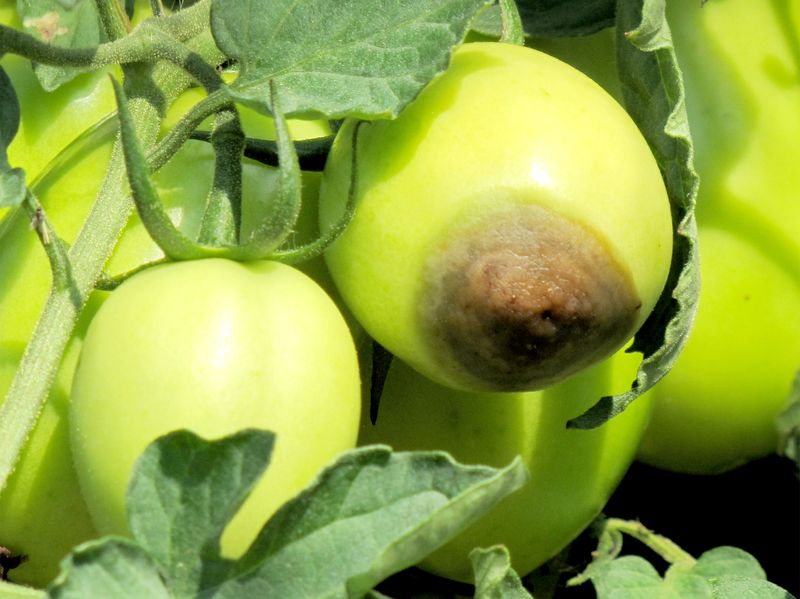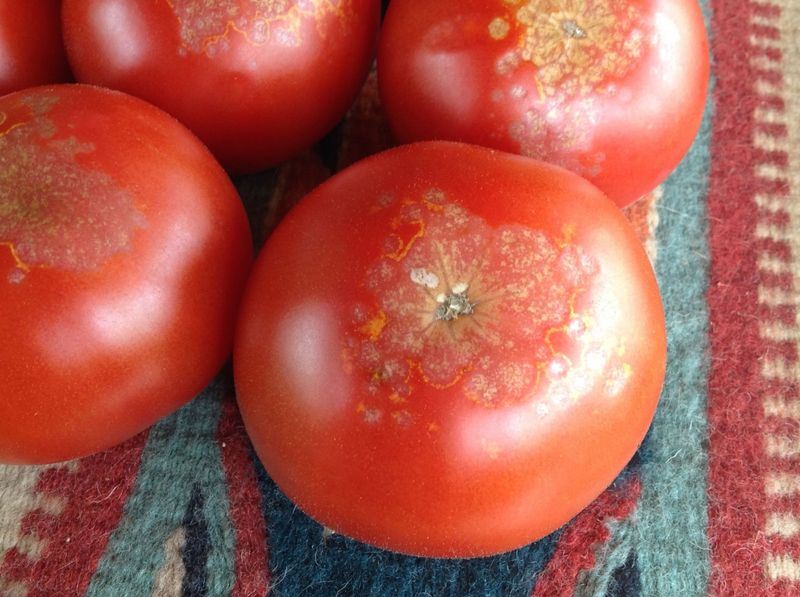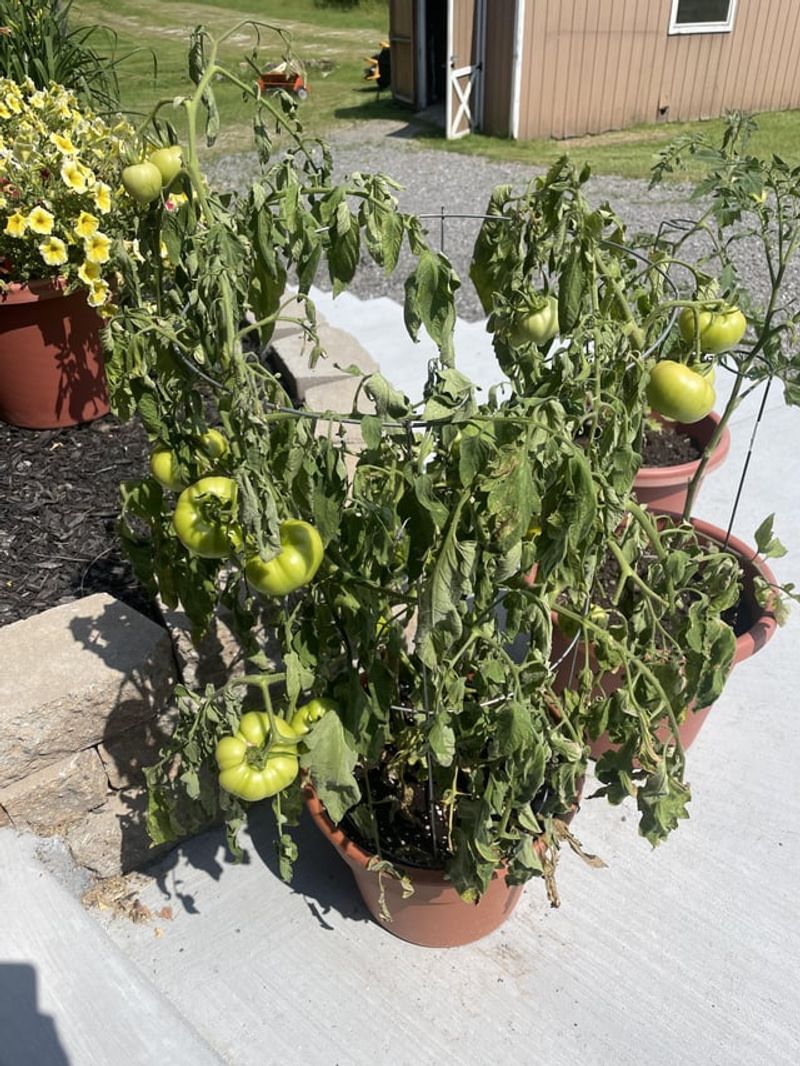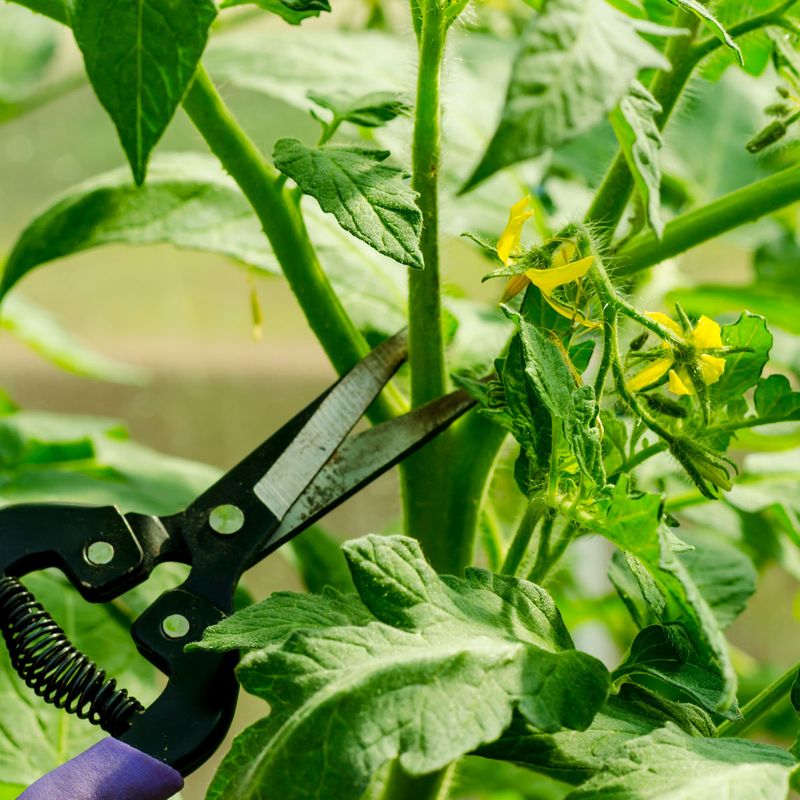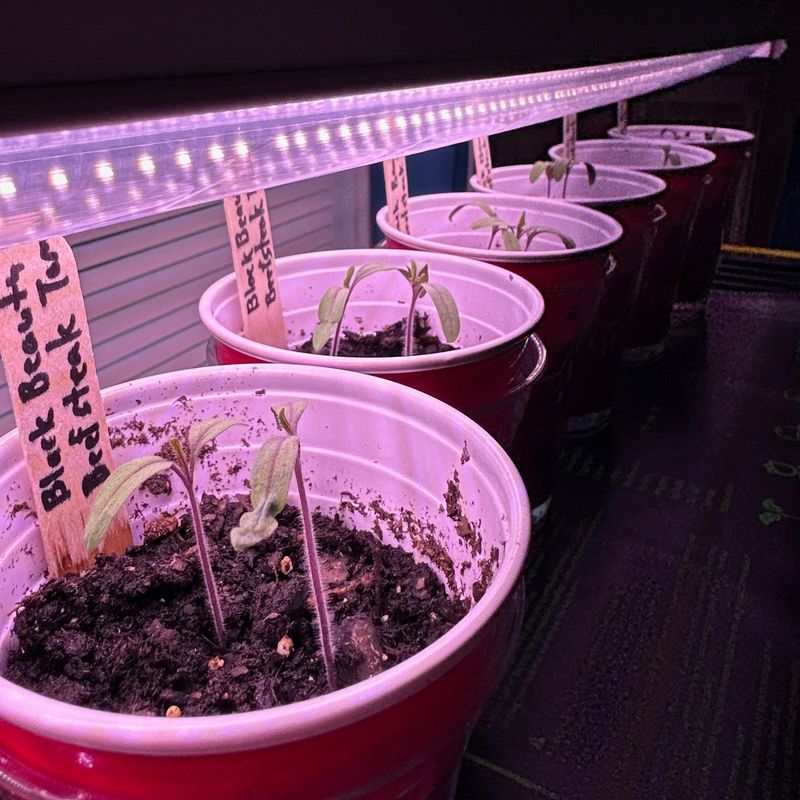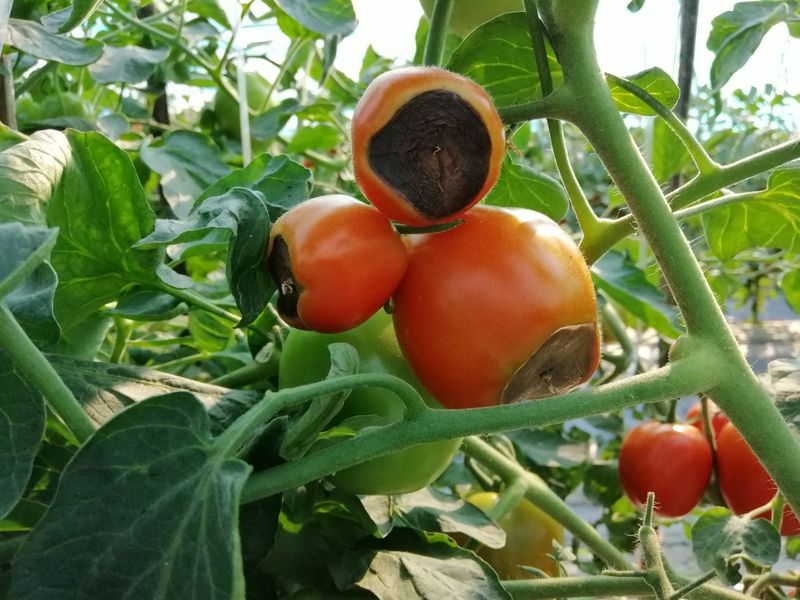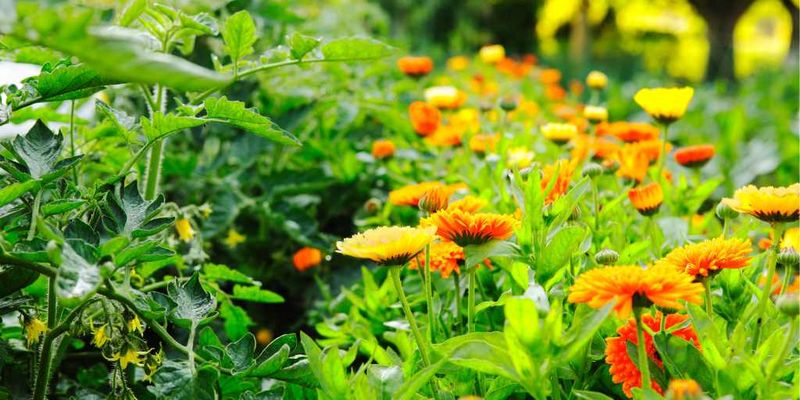There’s nothing worse than checking on your tomato plants and finding black, sunken spots on what should be your prize harvest. I’ve been there—one day the tomatoes look fine, and the next, they’re ruined at the bottom. Blossom end rot isn’t a disease, even though it looks like one.
It’s actually caused by a calcium imbalance in the plant, often linked to inconsistent watering or soil issues. It’s frustrating, especially when you’ve done everything else right.
The good news? Once you understand what’s going on, you can take steps to fix it. From adjusting your watering routine to checking soil nutrients, a few simple changes can help you rescue your future tomatoes.
1. Calcium Deficiency In Soil
The most common cause of bottom rot is insufficient calcium reaching the developing fruit. Your soil might have plenty of calcium, but if plants can’t access it, those dark spots will appear.
Conduct a soil test to determine calcium levels before adding amendments. Too much can be as harmful as too little.
Add crushed eggshells, lime, or gypsum to boost calcium levels naturally. Work these into the soil before planting or side-dress existing plants, watering thoroughly afterward.
2. Inconsistent Watering Habits
Irregular watering disrupts calcium uptake even when soil contains adequate amounts. The fruit develops faster than calcium can reach it during growth spurts after dry periods.
Set up a consistent watering schedule based on your climate and soil type. Aim for 1-2 inches of water weekly, including rainfall.
Mulch around plants with straw or compost to retain moisture and reduce fluctuations. Consider drip irrigation or soaker hoses for steady, even moisture delivery.
3. Excessive Nitrogen Fertilization
High-nitrogen fertilizers stimulate rapid leafy growth, causing plants to prioritize foliage over proper fruit development. This quick growth outpaces calcium distribution to fruits.
Switch to balanced fertilizers with lower nitrogen content once plants begin flowering. Look for formulations specifically designed for fruiting vegetables.
Consider foliar calcium sprays as a supplement during fruit development. Apply these directly to plants in the early morning or evening for best absorption.
4. Compacted Soil Restricting Root Growth
Roots struggle to expand and absorb nutrients in dense, compacted soil. Limited root systems can’t efficiently take up calcium or other essential nutrients.
Loosen soil gently around existing plants without disturbing roots too much. For future plantings, work in organic matter to improve structure.
Avoid walking near plants or creating pathways that compress the soil. Raised beds offer excellent protection against compaction while providing ideal growing conditions.
5. PH Imbalance Blocking Nutrient Uptake
Soil pH dramatically affects nutrient availability. Tomatoes prefer slightly acidic soil (6.0-6.8 pH), and outside this range, calcium becomes chemically bound and unavailable.
Test your soil pH with an inexpensive kit from garden centers. This simple step reveals whether pH adjustment is necessary.
Add sulfur to lower alkaline pH or lime to raise acidic pH gradually. Make small adjustments over time rather than dramatic changes that could shock plants.
6. Heat Stress During Fruit Formation
Extended periods above 90°F interfere with calcium transport within plants. The stress causes tomatoes to develop bottom rot even when other conditions seem ideal.
Create shade during peak afternoon hours using row covers or shade cloth. Even partial protection makes a significant difference during heat waves.
Morning watering helps plants withstand afternoon heat. The extra moisture cools root zones and improves nutrient uptake during the day’s cooler hours.
7. Drought Conditions Limiting Nutrient Transport
Water acts as the delivery system for nutrients throughout plants. Without sufficient moisture, calcium remains stranded in the soil or lower plant parts.
Deep watering encourages roots to grow downward, accessing more stable moisture and nutrient reserves. Shallow watering leads to vulnerable surface roots.
Water at soil level rather than overhead to maximize absorption and minimize evaporation. This targeted approach ensures more water reaches the root zone where it’s needed most.
8. Root Damage From Cultivation
Enthusiastic weeding or hoeing too close to plants can sever vital roots. Damaged root systems struggle to absorb enough calcium even when it’s abundant in soil.
Hand-pull weeds within 12 inches of tomato stems instead of using tools. This gentle approach preserves delicate feeder roots near the surface.
Apply mulch early in the season to suppress weeds naturally. A 2-3 inch layer eliminates most weed competition while conserving moisture and regulating soil temperature.
9. Planting In Cold Soil
Early planting in cool spring soil slows root development and nutrient uptake. Young plants established in cold conditions often show bottom rot on their first fruit clusters.
Wait until soil temperatures reach at least 60°F before transplanting. Use a soil thermometer to check rather than relying on calendar dates.
Black plastic mulch warms soil effectively before planting. Remove it once summer heat arrives or switch to organic mulch to prevent overheating the root zone.
10. Excessive Salt Buildup
Salt accumulation from fertilizers or hard water interferes with plants’ ability to absorb water and nutrients. The resulting moisture stress triggers bottom rot despite regular watering.
Leach excess salts by watering deeply until water runs freely from drainage holes or beyond the root zone in garden beds. This flushes harmful salts away from roots.
Consider collecting rainwater for irrigation if your tap water is particularly hard. This natural, salt-free alternative improves plant health dramatically in problem areas.
11. Waterlogged Soil Suffocating Roots
Constantly soggy soil creates oxygen-deprived conditions that suffocate roots and promote rot. Without functioning roots, calcium uptake becomes impossible.
Improve drainage by mixing in compost or coarse sand if you have heavy clay soil. These amendments create air pockets that allow excess water to flow away.
Raised beds provide excellent drainage in problematic areas. Even 6-12 inches of elevation makes a significant difference in wet conditions or locations with high water tables.
12. Variety Susceptibility Differences
Some tomato varieties are naturally more prone to bottom rot than others. Roma and paste types often show higher susceptibility due to their elongated fruit shape.
Research variety resistance before selecting seeds or transplants. Many newer hybrids have been specifically bred to resist physiological disorders.
Cherry tomatoes typically show greater resistance to bottom rot. Including a few of these varieties provides insurance against total crop loss while you address underlying soil issues.
13. Shallow Container Growing
Containers with insufficient depth restrict root growth and quickly develop moisture fluctuations. The limited soil volume dries out rapidly, stressing plants.
Choose containers at least 5 gallons in size for determinate varieties and 10+ gallons for indeterminate types. Larger soil volume provides better nutrient reserves and moisture stability.
Self-watering containers help maintain consistent moisture levels. The water reservoir creates a buffer against the rapid drying that triggers calcium deficiency symptoms.
14. Excessive Pruning Stress
Heavy pruning, especially during fruit development, creates plant stress that can trigger bottom rot. The plant struggles to heal while also trying to ripen fruit.
Limit pruning to removing suckers and damaged foliage. Maintain enough leaf surface to produce the energy needed for proper fruit development.
Time major pruning for cooler, cloudy days when plants face less stress. Early morning is ideal, giving plants time to recover before afternoon heat.
15. Poor Transplanting Techniques
Rough handling during transplanting damages roots and sets plants back significantly. This early stress often manifests as bottom rot on the first fruit clusters.
Handle seedlings by their root balls or leaves rather than stems. Stems are surprisingly fragile and can be easily crushed or kinked.
Water transplants immediately and keep them shaded for a few days. This recovery period helps plants establish new roots before facing the demands of fruit production.
16. Herbicide Drift Damage
Even small amounts of weed killers drifting from nearby applications can damage tomato plants. The resulting stress often triggers bottom rot as plants struggle to recover.
Create physical barriers like row covers when neighbors are spraying. Even temporary protection during application prevents most drift damage.
Avoid using weed-and-feed products or broadleaf herbicides anywhere near your garden. These persistent chemicals can affect tomatoes even at very low concentrations.
17. Companion Plant Competition
Some popular garden combinations actually compete with tomatoes for nutrients. Plants like dill and fennel can inhibit tomato growth when planted too closely.
Research compatible companions before planning your garden layout. Basil, marigolds, and nasturtiums make excellent tomato neighbors that repel pests without competing.
Maintain adequate spacing between plants to reduce root competition. Even beneficial companions need enough room to prevent moisture and nutrient stress.

